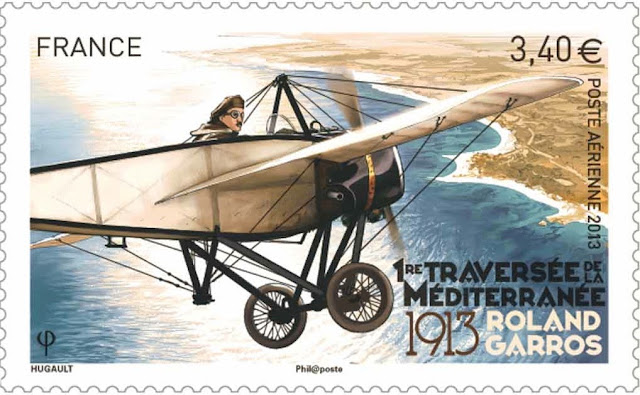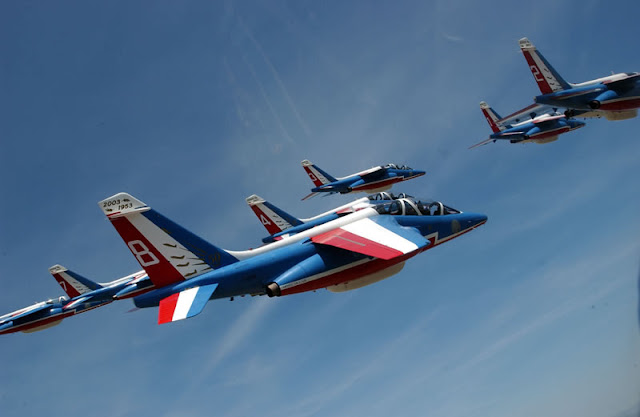Saturday 31 August 2013
Friday 30 August 2013
Tuesday 27 August 2013
Sunday 25 August 2013
Saturday 24 August 2013
Friday 23 August 2013
Thursday 22 August 2013
Free Flight Masters in Ste Maxime 2013
LE SHOW
UN CONCEPT INEDIT DE VOLTIGE, ORIGINAL ET UNIQUE AU MONDE !
Le Free Flight World Masters est un véritable « Show Aérien » à lui seul. Ce concept événementiel qui place la voltige au cœur de l’événement a été crée par Bleuciel Airshow, il est le premier du genre dans le monde de l’aéronautique.
Dans une ambiance rythmée et festive, ce spectacle aérien est composé de trois parties, animées par un speaker professionnel spécialiste des grands rendez vous sportifs internationaux :
- Un challenge de voltige aérienne par rounds de 4 minutes. Les meilleurs pilotes de voltige du monde s’affrontent en musique, lors de cette prestation en "libre intégral". Les pilotes sont jugés à l’applaudimètre par le public. Les évolutions sont commentées par un spécialiste de l'aéronautique ce qui permet au public d’apprécier la technicité et le style des figures réalisées.
- Un show aérien sous forme de poursuites, de simulations de combats aériens, de voltiges synchronisées…
- Un show terrestre "à l’américaine" : chaque passage des pilotes est entrecoupé par un spectacle sur scène avec des prestations originales et rythmées par les interventions des Free Flight Girls entre les évolutions aériennes.
Une remise des prix sur le podium FFWM clôt le spectacle avec une séance de dédicaces des pilotes.
Tuesday 20 August 2013
Sunday 18 August 2013
Saturday 17 August 2013
super Tomcat 21
The Super Tomcat 21 grew out of a previous proposal called the Tomcat Quick Strike. Quick Strike was meant to be an upgrade for existing F-14s, giving them high-end integrated nav-attack pods, upgraded ground attack modes for APG-71 Radar (based on the AWG-9) to pick up the slack that the A-6E TRAM Intruder would leave behind. This was seen a an insufficient technological leap over the F-14B and D, especially with rumors that a clean sheet next generation Hornet was in the works. So Grumman came back with a true “Super Tomcat,” called the Attack Super Tomcat 21.
The Attack Super Tomcat 21 (ASF-14) would be a new build, highly updated version of the legendary F-14. A true “Super Tomcat” in every sense of the word, the machine would boast a large increase in internal fuel (over it’s already massive capacity) via thicker wings and larger over intake “shoulders.” The jet would have an all new digital flight control system with larger surfaces, dropping its minimum speed by upwards of 20kts. It would utilize the more powerful GE-F110-129 afterburning turbofan for it’s powerplant, allowing sustained supercruise of mach 1.3+. Airframe enhacements would allow the jet to reach over 77 degrees of sustained AoA but thrust vectoring was also to be part of the new design, which would have made it the most maneuverable US fighter ever. There was also talk about the airframe being able to later receive the F-22s F-119 or F-120 derivative motors, resulting in a predicted supercruise of mach 2.0 or more!
The forward windscreen would change from the legacy 3 piece style and be replaced with a single piece of wraparound glass, giving the pilot much better visibility. Finally, all the hydraulic and electrical systems that gave legacy Tomcat maintainers such headaches over the years would have been replaced with simplified systems similar to those in the Super Hornet. Further, many structural components would be made out of carbon fiber instead of aluminum or titanium. This would allow the new Tomcat to be only slightly heavier in gross weight (about 1200 pounds), while gaining so much capability, fuel and thrust.
From an avionics standpoint the ASF-14 would be a major leap forward, with the navigational FLIR and optional Terrain Following Radar housed in the Phoenix missile mount’s aerodynamic fairings. The Infra Red Search & Track system and targeting FLIR would be mounted in under-nose pods similar to the F-14D’s TCS/IRST pod. The cockpit would have featured an all glass design with helmet mounted displays for both the pilot and the RIO/WSO. The most exciting part of the avionics suite would have made use of the Tomcat’s massive radar aperture. A mammoth active electronically scanned array (AESA) radar could be fitted and provided with immense amounts of power for interlaced air to air and air to ground operations or even standoff electronic attack. You can see how incredible the ASF-14s AESA capability would have matured into by looking at the current APG-63V3 AESA radar upgrade program for the F-15. The APG-63V3 is actually more capable than the F-22s APG-77 AESA radar because it is simply larger in diameter, allowing more transit/receive modules to be utilized. The Tomcat was built originally for the massive AWG-9 fire control radar, so there is a LOT of real estate up front for the mother of all fighter jet AESA radars to be fitted!
I often talk about how impressed I am with the F/A-18E/F/G program. They delivered a 80% solution to NAVAIR on time and on budget. The jets are comparatively reliable and have good commonality with the legacy Hornet for aircrew and maintenance personnel crossover familiarity. Although as a replacement for both the F-14 and the A-6, the Super Hornet lacks greatly in some very important respects. Mainly its range and speed performance. The “Rhino” as it is now called is still a gas hungry machine, although not as bad as it’s A/B/C/D brethren. It not only has a relatively modest fuel fraction, but it is also apparently a bit of a pig aerodynamically. Sporting a thicker wing and a larger, less efficient airframe, the Super Hornet is not that fast when compared to the Tomcat or even the legacy Hornet, especially when there are stores, or even pylons hung on its big wings. The pylons are probably the most appalling factor of the E/F/G model. They are actually canted out 3 degrees due to weapons separation issues during testing. This means that they are acting as not just parasitic drag, but as little speedbrakes and the more you store on them the more surface area is meeting airflow headon, causing massive drag. The Super’s big wing and control surfaces do help in the slow speed handling regime, but that area of the envelope is becoming less important with the proliferation of helmet mounting sighting systems paired with high off boresight heat seeking missiles. In other words, you now have to see your enemy to kill him in a dogfight, as opposed to getting boresighted weapons pointed directly at him.
The Super Hornet is a good jet at a lot of things, but it’s not a GREAT jet at everything. This is a result of the “supersizing” of the wrong machine into a one size fits all fighter. The Attack Super Tomcat 21 would have been the pinnacle of non stealth heavy fighter/attack jets, offering blistering speed, range, on station time, sensors and maneuverability in a single carrier capable package. Sadly the ASF-14 proposal never came to reality as the USN thought it would be to expensive in the long run, and opted with the Super Hornet. So next time you hear about how awesome the avionics integration is on the Super Hornet or the Growler, ask yourself how much better that fit would have been able to be put to use inside the Attack Super Tomcat 21′s airframe!
Friday 16 August 2013
Subscribe to:
Posts (Atom)






























































